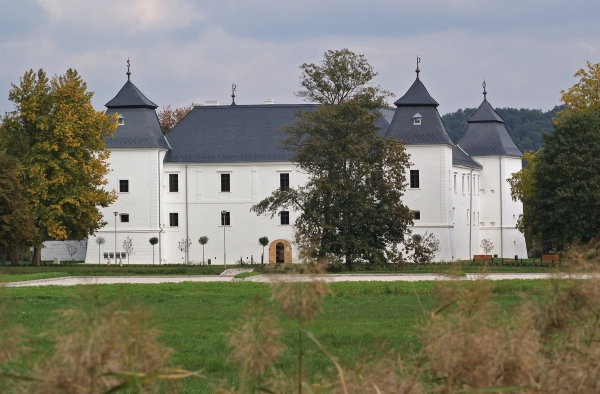Pure Elegance
Renaissance Castle, Egervár
Architects: Zsuzsa Csángó, László Földes, Balázs Szlabey, Ágnes Vértesy
Text: Ferenc Agg
Photos: Csaba Jászai, János László

In the valley of Sárvíz, north of Zalaegerszeg, the castle of Egervár once belonged to Vas county. Built in a predominantly Renaissance style, it has integrated a variety of periods, forms and functions throughout its history. During research in 2012 it turned out that the idea of the Renaissance castle with four corner turrets was conceived a few years before 1557, later on the existing building was converted several times, producing the fortress-like structure surrounded from all sides with four corner turrets and an external rampart. In 1954-László Gerő architect, famous researcher of castles initiated the restoration of the building, but the project was delayed and finished only ten years later to designs by Tamás Dragonits. The existing building was facelifted in 2012-2013 after being in use for some fifty years.
Preceding construction and also later on the walls were exposed for research revealing layers of the architecture spanning over centuries. Archeological procedures proved the orientation of the building replaced by the present-day Renaissance castle as well as the existence of the bulwark and the ridge as parts of the external defenses. Now knowing the designs and seeing the outcome, we can only praise the thoroughness with which managers of the project, professionals and designers unwrapped this building after its waking up from a long dream, and thus revealed, exposed and cleaned everything which has gathered in layers to envelope it throughout its long existence. Gentle and sensitive is the authentically irregular surface of the facade, the same colour of members, cornices and plinths. This kind of homogenious quality and elegance is characteristic of the whole building, the court-facing facades and the interiors as well.
Architect: Zsuzsa Csángó
Interior: László Földes, Balázs Szlabey, Ágnes Vértesy
Electrical engineering: Pál Kárász
Lights: Ferenc Haász
HVAC: László Horváth, Fűtésenergia Kft.
Monument expert: Gábor Kerner
Art historians: Dr. Alice Mezey, Dr. Lajos Bozóki, Tamás Horogszegi, Gábor Gaylhoffer Kovács
Archaelology: Dr. László Vándor
Projekt manager, art historian: Zsolt Virág






